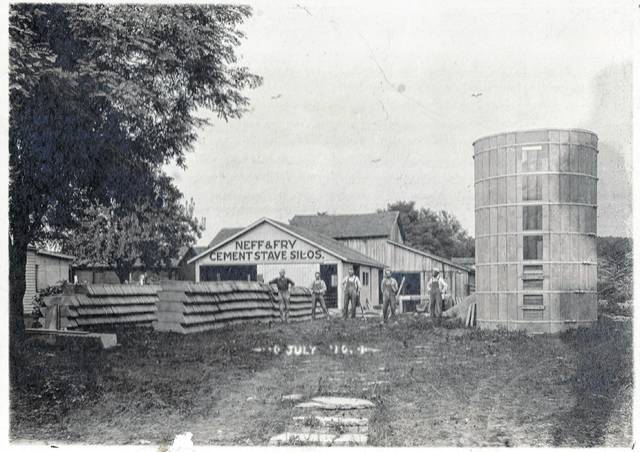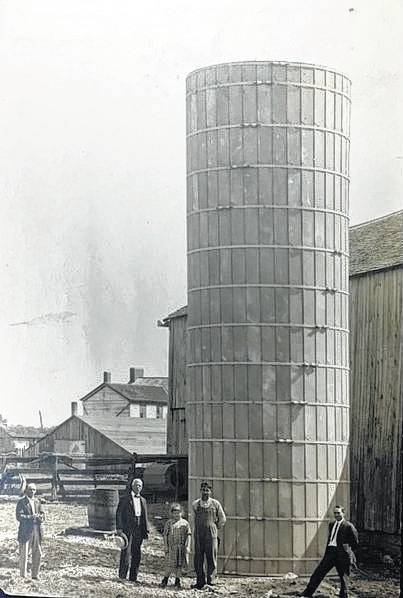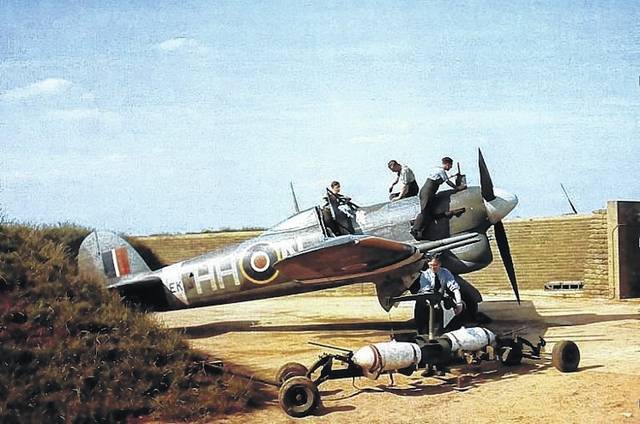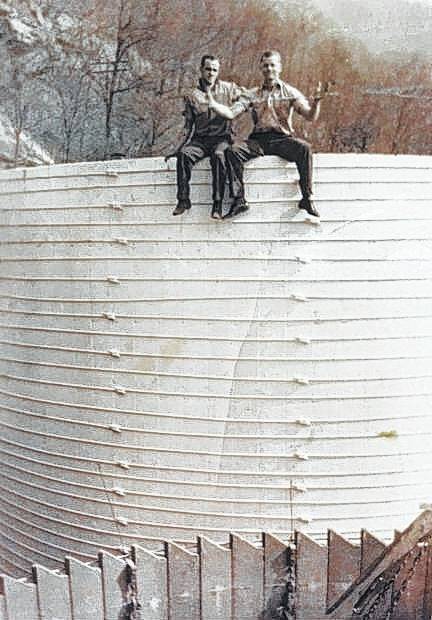



CAMDEN — Few Camden businesses have had greater success on a national level than The Neff and Fry Company. When Charles Neff and Murrel Fry resigned their positions as Camden’s rural mail carriers in 1916 to start a small manufacturing company in a nearby shed, neither likely expected that by 1950, business revenues would exceed $2 million. But smart business men they were and success soon found them.
The Neff and Fry owners and company were pioneers in concrete silo construction. Their interlocking, concrete stave system replaced wood construction and produced a much stronger, improved storage option for farmers across the region. The silos were engineered, produced and erected by Neff and Fry employees and were advertised in newspapers and trade magazine as silos that would “stand for centuries and give absolute perfect satisfaction every day it stands.”
Within a few years, Neff and Fry had constructed more than 300 silos in southwest Ohio (one as high as 69 feet), and the innovative owners never rested on their laurels. They began producing chimneys, farm chutes, water tanks and industrial-size commercial storage bins — which turned out to be just as popular as their silos. A 1925 Preble County News article proudly announced the company had been awarded a contract to erect coal pockets at Henry Ford’s automobile plant in Cleveland. Clearly a feather in Camden’s cap. Neff and Fry employees (totaling 75 by then) produced high-quality materials and traveled the country installing storage bins for large factories and power plants.
In the early 1930s, the company added yet another successful product—their own patented, leak-proof concrete burial vault. Funeral Directors from all over the multi-state area came to Camden to view the new Neff and Fry Funeral Service Sepulcher. And they were pleased with what they saw. Sales of the new burial vault boomed as did the number of Neff and Fry employees.
Neff and Fry began working with the U.S. Department of Defense in the early 1940’s building storage bins at various airfields and at the atomic plant in Oak Ridge, Tennessee. Then, during World War II, the company became a major producer of 100-pound concrete practice bombs for the U.S. Air Force. Used extensively in airfields across the country to train bombardiers, the bombs assured Neff and Fry’s survival during the tough war years.
With the male labor shortage created by WWII, the majority of Neff and Fry’s workforce during that time—about 125—were women. Our own Camden Rosie Riveters! When the war and the government contracted ended, Neff and Fry replaced the women workers with men, but for that crucial time, the women of Camden served the company, the area and their country with pride.
The silo business slowed but the storage bin business continued to grow and by the early 1950’s, the Neff and Fry Company was one of the largest businesses in Preble County and the largest industrial bin builder in the U.S., reportedly erecting bins from Maine to California and in Canada. A 1947 edition of the “Pit and Quarry” concrete trade magazine cited Neff and Fry as “one of the country’s most important manufacturers of concrete staves,” and seemed almost giddy about the company’s new upgraded equipment installation and their new capacity to produce 6-sided staves.
The deaths of member of the company’s board, including founder Charles Neff, would change the business’s course, though, and by 1960, the Neff and Fry Company was sold to two businessmen from Illinois. Though the new owners kept the Neff and Fry name and continued a relatively successful business, sales eventually declined. The company would be sold again in the early 70s and by 1977, would close completely.
Camden is proud to have been the home of such an enterprising business and the two founding visionary entrepreneurs. The Neff and Fry Company advertised their products locally and nationally as “Built with a Guarantee,” assuring customers the structures would stand for centuries. So successful was the business on a national level that copies of their brochures and trade literature can be found in the Smithsonian’s American History Museum library.
Do you have a Neff and Fry silo or bin on your property? If so, we’d love to see it. Feel free to post a photo on our https://www.facebook.com/CamdenOHBicentennial2018/ website, or stop by there to view more photos of the company, its products and Neff and Fry employees.





